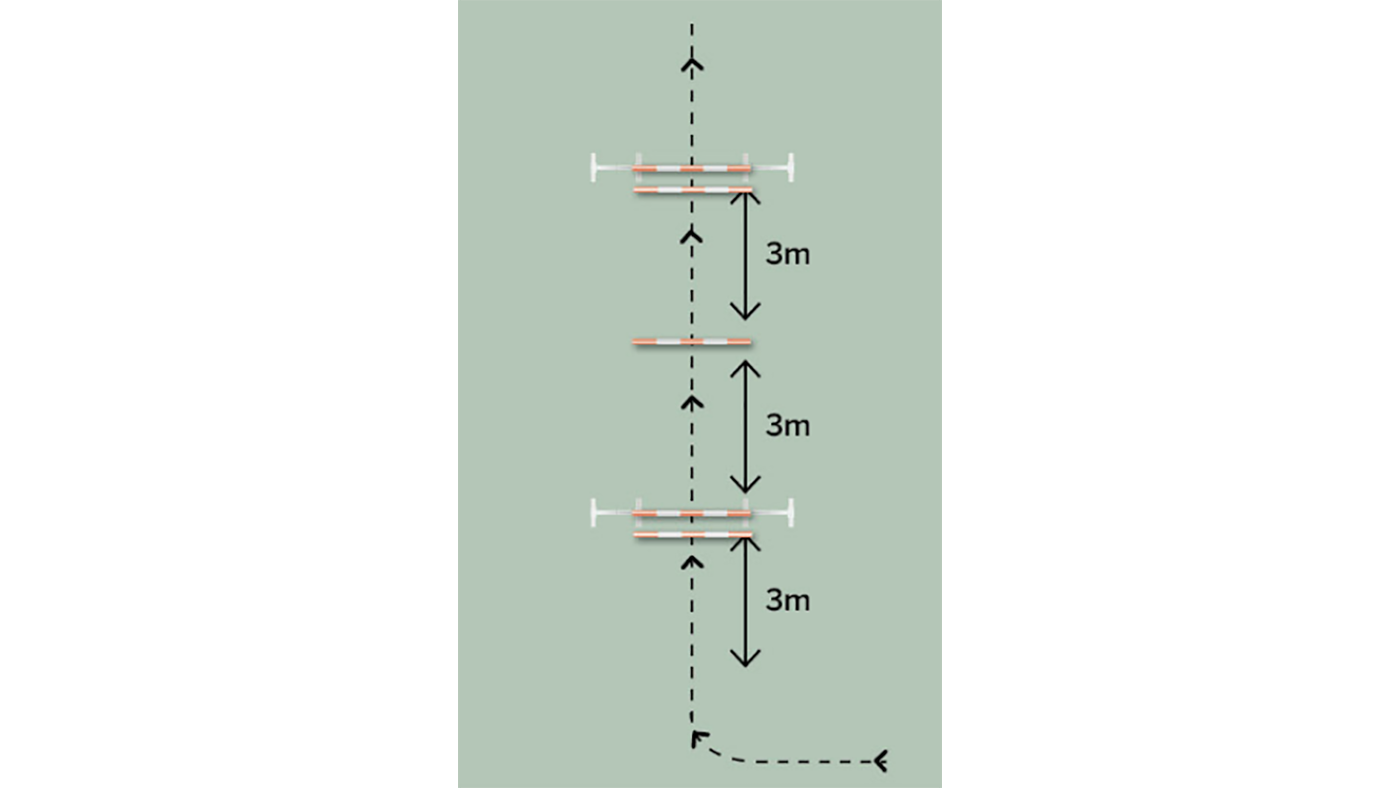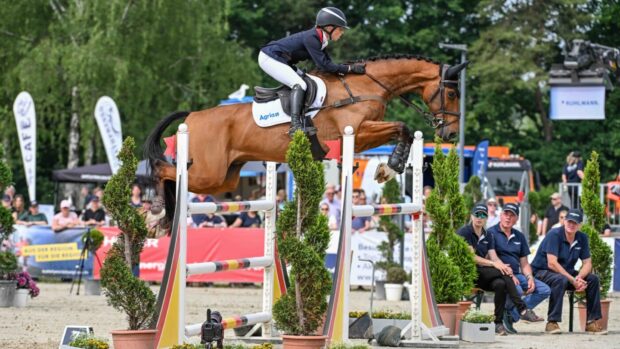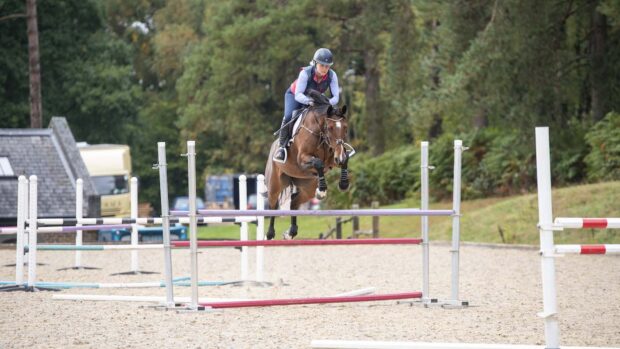The Hickstead Derby winner explains how to get your horse to make a better shape over fences
In 2019, Ireland’s Mikey Pender became the youngest-ever winner of the Hickstead Derby, aged 19. He also became the first rider in nearly 40 years to lift the Boomerang trophy at his first attempt at the title. Mikey has also competed for Ireland in three pony European Championships — finishing fifth aboard his horse Imagine If One in 2015 — as well as one junior and one young rider European Championships. Here he explains how to get your horse to make a better shape over fences
Training the stars
I have used this exercise a lot with my Hickstead Derby winner, the 12-year-old puissance specialist Hearton Du Bois Halleux, as he can become strong going into fences. This has helped him jump a lot more smoothly.
I use this exercise for all my horses — whatever their age and level they’re working at — usually about once every two weeks.
My aim is for the horse to jump through this combination straight, to be relaxed, make a good shape over the fences and then land on whatever canter lead I ask for.
How to get your horse to make a better shape over fences
1. On the centre line of the arena, set up a small vertical, around 90cm-1.20m in height, depending on your horse’s experience and jumping ability. Place a pole on the floor three metres behind this vertical. Then three metres behind that pole, place another small vertical, the same height as the first one.
Place ground poles about half a metre in front of each of the verticals, or just over if the verticals are up to height.

2. Having warmed up, approach in canter, making sure the horse is relaxed. Change the rein and repeat.
3. How often you repeat this exercise depends on whether you are happy with the way the horse is feeling. Some horses only need to do it twice, others need more attempts. Once the horse has given you the right feeling once or twice in a row, that’s enough. It’s all about the effort the horse gives you.
Continued below…

#SundaySchool: the showjumping ‘gym’ with Holly Smith
The international showjumper talks us through this multi-fence workout which she uses with both her younger and more experienced horses

#SundaySchool: Laura Renwick — how to improve jump-off turns

Subscribe to Horse & Hound magazine today – and enjoy unlimited website access all year round
Consider this…
- Don’t repeat this exercise more than 10 times in any one session.
- Some horses will make a rounder shape jumping the verticals if they are 1.10m high rather than 90cm. It all depends on the horse.
- Don’t be tempted to make the verticals any bigger than 1.20m. There’s no need — it’s about technique, not height.
- If your horse isn’t relaxed, do some flatwork until he settles.
- If a horse is still going too fast and is rushing towards the second vertical, add a ground pole placed three metres after the second vertical. I only do this on rare occasions, though.
- If the horse isn’t jumping straight, add V-poles — do whatever it takes to teach them to keep straight.
- You could start with just the one vertical and landing pole when introducing a three- or four-year-old for the first time.
Would you like to read Horse & Hound’s independent journalism without any adverts? Join Horse & Hound Plus today and you can read all articles on HorseandHound.co.uk completely ad-free




